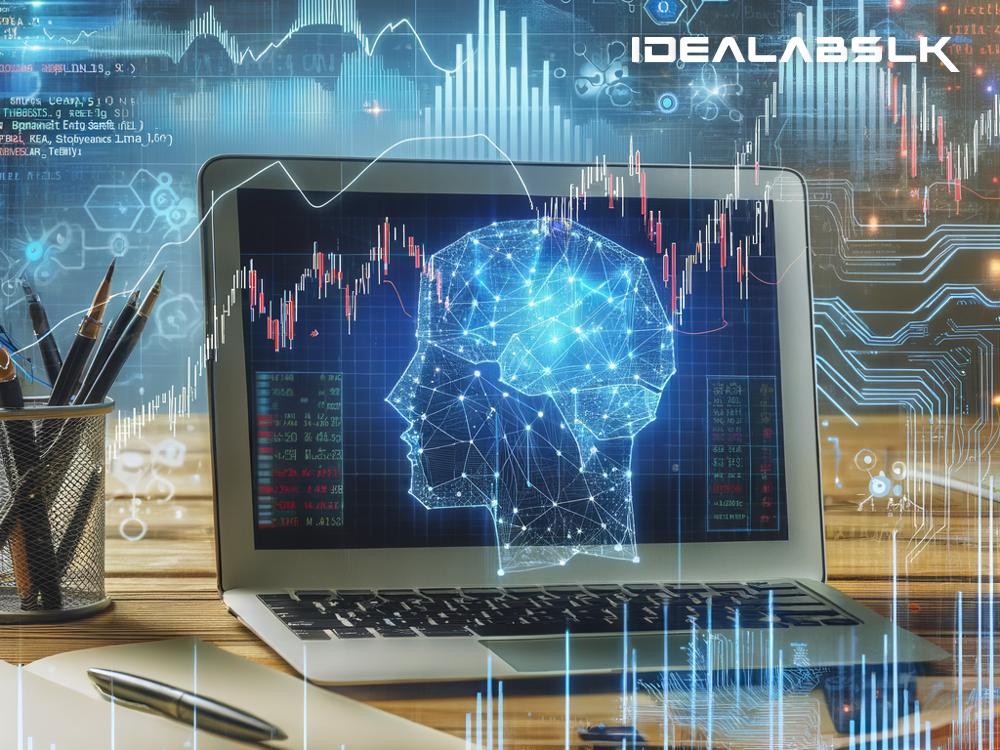Unraveling AI in Trading: A Simple Guide to High-Frequency Trading with AI
Have you ever watched a movie where stock traders are frantically screaming on the trading floor, buying and selling as fast as they can? Well, that world has vastly changed, thanks to the power of artificial intelligence (AI). In the modern realm of trading, particularly in the high-speed area known as high-frequency trading (HFT), AI has become a game-changer. But what exactly is AI in trading, and how does it work, especially for those not versed in technical jargon? Let's break it down into simpler terms.
The Basics of AI in Trading
Think of AI as a super-smart robot that can analyze, predict, and make decisions much faster than humans. In trading, this means AI algorithms can scan through mountains of financial data, spot patterns, make predictions about market moves, and execute trades at speeds and volumes unimaginable to human traders. This is not just about being fast but also about being smart and making well-informed decisions quickly.
Why High-Frequency Trading?
High-frequency trading is like the sprinting star of the trading world. It's all about making a vast number of trades very quickly, often in fractions of a second. The goal? To capitalize on tiny price differences that occur in the blink of an eye. While the profit margin per trade might be small, doing this thousands of times a day adds up. This is where AI shines, handling these rapid, high-volume transactions more efficiently than any human could.
Leveraging AI Algorithms for High-Frequency Trading
1. Speed and Efficiency
At its core, one of the biggest advantages of using AI in HFT is speed. AI algorithms can respond in real-time to market changes, entering and exiting trades within milliseconds. This level of efficiency is paramount in a realm where time literally means money.
2. Predictive Analytics
AI algorithms are not only fast but can also predict future market trends based on historical data. They employ complex mathematical models to forecast market movements, giving traders an edge. This predictive power, combined with lightning-fast execution, can significantly enhance profitability in high-frequency trading.
3. Risk Management
AI can also play a vital role in managing risk. By continuously analyzing the market and the performance of different trading strategies, AI systems can adjust their approaches in real-time to minimize losses. This dynamic adjustment is crucial in the volatile trading environment of HFT, where fortunes can change in seconds.
Key Challenges
While AI in trading, especially in high-frequency trading, offers immense opportunities, it's not without its challenges. Here are a couple:
1. Complexity
Developing, implementing, and maintaining AI trading algorithms requires a deep understanding of both financial markets and advanced machine learning techniques. This complexity means that leveraging AI in trading is often beyond the reach of individual traders and is primarily the domain of well-resourced institutions.
2. Market Impact and Ethical Considerations
The sheer speed and volume of trades generated by AI algorithms can sometimes lead to market instability. Additionally, there's an ongoing debate about the fairness and ethical implications of using sophisticated AI in trading, which not all players can access.
The Future of AI in Trading
AI's role in trading is only set to grow. With advancements in technology and analytics, AI algorithms will become even more sophisticated, capable of making more nuanced predictions and decisions. This evolution will likely make high-frequency trading even more competitive and challenging for those not equipped with the latest AI tools.
Wrapping Up
AI in trading, particularly in high-frequency trading, represents a significant shift in how financial markets operate. By leveraging AI algorithms, traders can execute trades at unprecedented speeds, utilize predictive analytics to forecast market movements, and manage risk more effectively. However, this shift also raises questions about market stability and fairness that will need to be addressed as these technologies continue to evolve.
In essence, AI has transformed trading from a human-driven endeavor to a highly automated and sophisticated process. As we look to the future, the intersection of AI and trading will undoubtedly continue to be an area of significant development and intrigue. Whether you're a seasoned trader or simply fascinated by the role of technology in financial markets, the impact of AI on trading is something we cannot ignore.

